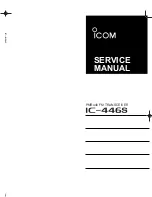
15
What is a Motor?
There are many types of electrical motors, but the one used in the experiments is a small DC
motor that attaches to a propeller. Normally constructed with spinning magnets (rotor) that
surround a coil of wires (stator), a motor converts electrical energy into mechanical energy by
taking in electrical power and then spinning a shaft using magnetic energy. The shaft can be
connected to a “load” such as a propeller to do work; i.e., spinning the propeller to generate wind
energy.
The physical part and electrical symbol for a DC motor are shown below:
What is Electrolysis?
For our purposes the term electrolysis defines splitting water into its two main components –
hydrogen and oxygen. This is what a “reversible” fuel cell does; it splits water (H2O) into
hydrogen and oxygen gases in electrolysis mode and then recombines hydrogen and oxygen in
fuel cell mode to create electricity, which is why it is called “reversible”. It doesn’t take much
voltage (about 1.5 volts) to split water into hydrogen and oxygen as one of the experiments will
demonstrate.
The physical part and symbol for a reversible fuel cell are shown below:
O
H
MEA
















































